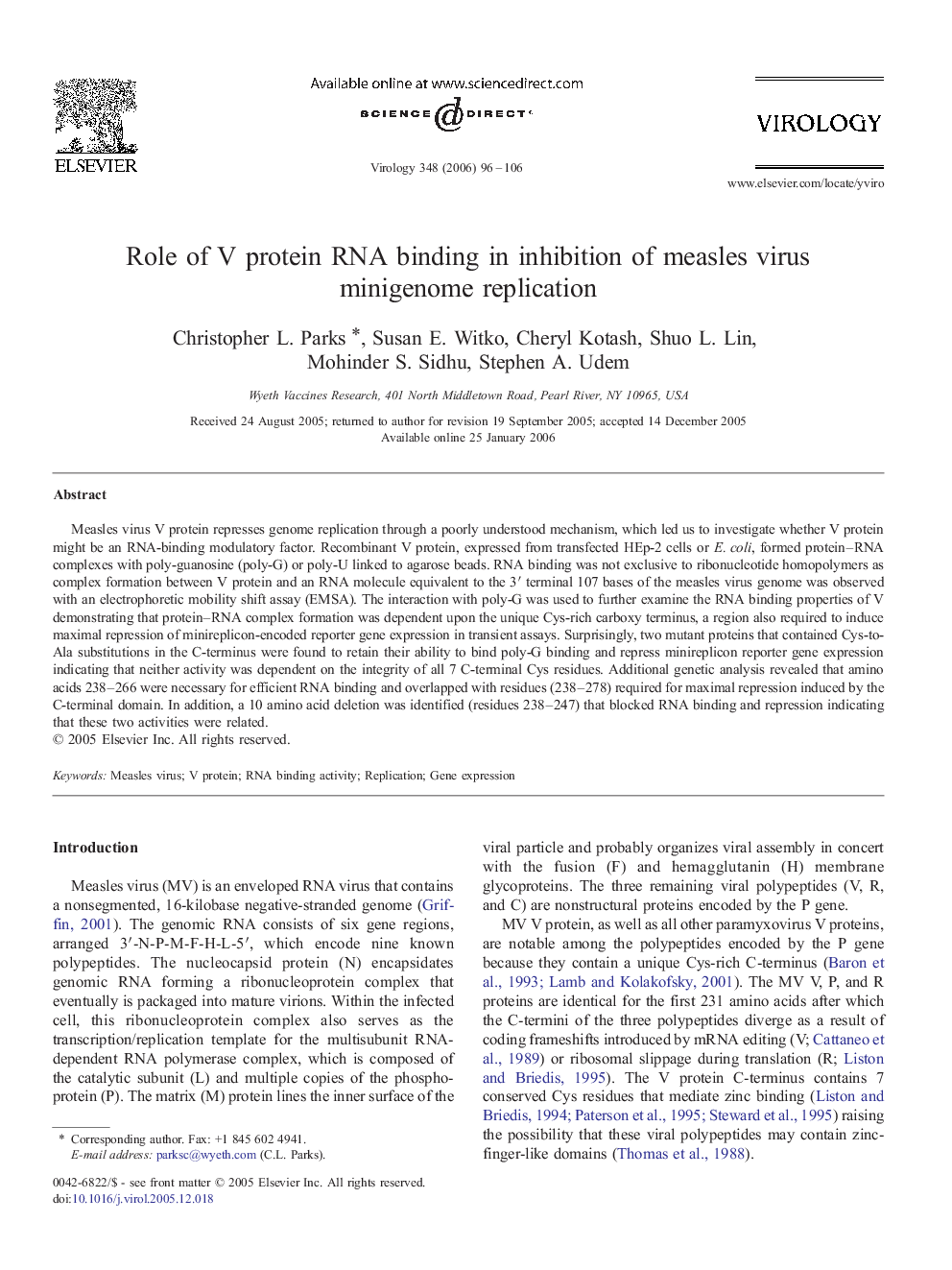| Article ID | Journal | Published Year | Pages | File Type |
|---|---|---|---|---|
| 3426959 | Virology | 2006 | 11 Pages |
Measles virus V protein represses genome replication through a poorly understood mechanism, which led us to investigate whether V protein might be an RNA-binding modulatory factor. Recombinant V protein, expressed from transfected HEp-2 cells or E. coli, formed protein–RNA complexes with poly-guanosine (poly-G) or poly-U linked to agarose beads. RNA binding was not exclusive to ribonucleotide homopolymers as complex formation between V protein and an RNA molecule equivalent to the 3′ terminal 107 bases of the measles virus genome was observed with an electrophoretic mobility shift assay (EMSA). The interaction with poly-G was used to further examine the RNA binding properties of V demonstrating that protein–RNA complex formation was dependent upon the unique Cys-rich carboxy terminus, a region also required to induce maximal repression of minireplicon-encoded reporter gene expression in transient assays. Surprisingly, two mutant proteins that contained Cys-to-Ala substitutions in the C-terminus were found to retain their ability to bind poly-G binding and repress minireplicon reporter gene expression indicating that neither activity was dependent on the integrity of all 7 C-terminal Cys residues. Additional genetic analysis revealed that amino acids 238–266 were necessary for efficient RNA binding and overlapped with residues (238–278) required for maximal repression induced by the C-terminal domain. In addition, a 10 amino acid deletion was identified (residues 238–247) that blocked RNA binding and repression indicating that these two activities were related.
